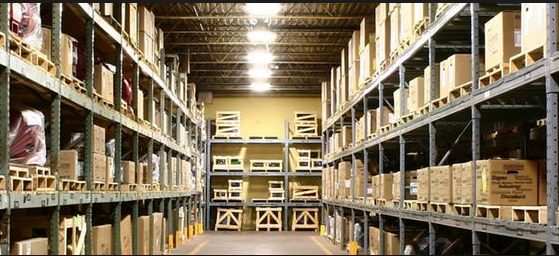In the world of commercial and industrial lighting, metal halide seems to be one of the more popular lighting technologies that are found in facilities and buildings. Although this technology is old and slowly people are moving over to more efficient technologies like LED, for those who haven’t yet are faced with a difficult task; discovering what it takes and how they go about making the switch from metal halide over to a LED equivalent.
A proper lighting design for any facility or building is crucial for optimal savings, best light for the given environment, and overall a good lighting design. Making the switch to metal halide to LED can seem technical, confusing, and even scary; but this post should get you on the right path.
We are going to cover each thing you should consider about making the switch, and exactly why LED is the technology of the future and thus; the technology your building should be switching to over the others.
Replace on lumens, not watts. A common misconception about upgrading a lighting system is that they need to replace their existing fixtures based on wattage alone. Instead, this is totally something you should avoid at all costs because it will result in three things:
1. Paying more than you need to because you are buying more light than you need
3. Paying extra in energy costs associated
As you can tell, when you buy solely based on watts, you end losing a lot more than you gain. Instead, you need to buy your fixtures based on lumens, not watts!
The higher the lumen output per watt you get equals the higher efficiency it runs at. Would you rather have a light that needs 100 watts to output 5,000 lumens (50 lumens / watt) or 33.3 watts to output that same 5,000 lumens (150 lumens / watts)? The answer is obvious, and LED is the more efficient technology that allows for more lumen per watt output. This is especially true when you go with a DLC qualified metal halide LED replacement. DesignLights Consortium is an organization that tests commercial lighting products based on their individual efficiency and quality and only those that pass are qualified by them, no exceptions.
This whole concept of buying on lumens rather than watts is basically the entire thing you need to know about replacing metal halide with LEDs. Without this, you will be “going in blindly” and not getting the proper illumination. Because again, watts are not everything in lighting, lumens are.
Not convinced that LED is a winner over metal halide? Here are some more benefits other than just higher efficiency that LED will bring to your facility when you replace metal halide lighting fixtures with it.
Longer lifespan. A replacement of metal halide with LED will allow you to realize the benefit of a much longer lifespan that LED technology offers. At a lifespan of 2-3 times longer than MH lights, you will be able to reduce maintenance costs associated with changing out burnt out lights. Along with that cost saving benefit, you get to reduce your purchases of new luminaires to replace the ones that burn out.
No flickering, ever. If you’ve ever ran into the issue of flickering lights with your metal halides, then a switch over to a proper LED equivalent will get rid of this issue, and the issue of buzzing, entirely. Even when an LED fixture nears the end of its lifespan, it will never flicker or buzz.
Conclusion
Although this post hasn’t gone step by step how to replace, it’s covered the general process of replacing metal halide with LED. The main points you need to know have been defined, such as buying by lumens, and never by watts alone. This fact by itself should allow you to get the most optimal LED lighting system installed in place of your metal halides (or any other technology like HPS).
source http://my-led-lighting-guide.blogspot.com/2016/10/the-process-of-replacing-metal-halide.html

No comments:
Post a Comment